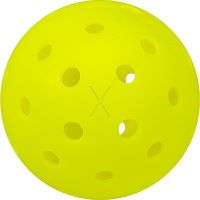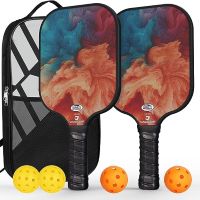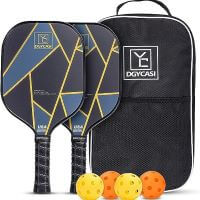In pickleball, strategy is key. You should apply pressure on your opponents as part of this strategy. Playing aggressively is one way to accomplish this. There is one extremely powerful shot you can make on pickleball courts, but it doesn’t mean you should drive the ball or speed up and bang it every time.
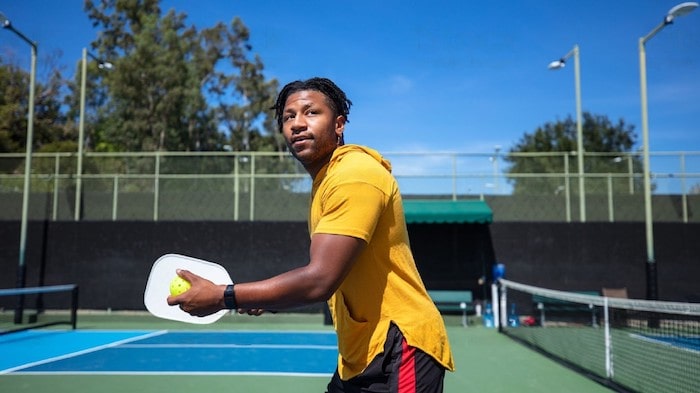
Pickleball spikes (also called slams or smashes) are technically called overheads. Pickleball spikes require some specific moves that not everyone knows. Check out our guide to everything you need to know about spike hits in pickleball if you want to master the sport.
You Might Also Like:
What Is a Spike in Pickleball?
In pickleball, a spike is known by many names. That’s a pickleball slam. That’s a pickleball smash. This shot is technically called an overhead.
Pickleball’s most fun shot is named for where your paddle comes into contact with the ball. It is extremely satisfying to slam your opponent so fast that he cannot even make contact with you or jumps out of the way.
There are several scenarios in which these shots are possible. Pickleball opponents sometimes hit the ball high with their paddles, allowing the ball to fly out of bounds or to be spiked back at them by you. You can also score an easy slam when the other team hits a lob shot over your head that is either poorly executed or not selected properly.
How to Spike in Pickleball?
The spike is a deceptively tricky shot. As soon as the opportunity arises, everyone loses all control and technique. But you won’t do that. This article will prepare you as you read it.
Your first step should be to set your feet. To do this, you should extend a line between your feet and point toward where you want the ball to land.
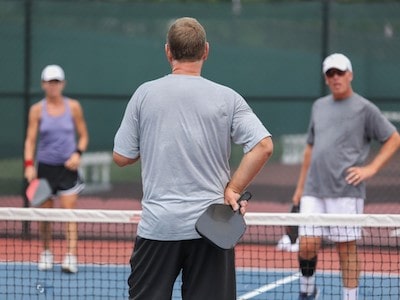
You lose control of your shot if you spike the ball facing the other court in a ready position. Set up for a spike by turning your body to the side.
The ball doesn’t have to be hit extremely hard, as you might think. Sometimes you can improve your aim and placement by taking a little off. Pickleball players end up sending balls out of bounds by smashing balls into the net with all their might.
Lastly, use your non-paddle hand to balance, gain more body control, and aim your paddle.
Can You Spike in Non-volley Zone?
You can’t hit the ball out of the air in the kitchen. Allow it to bounce. You can hit it from wherever you are once it bounces.
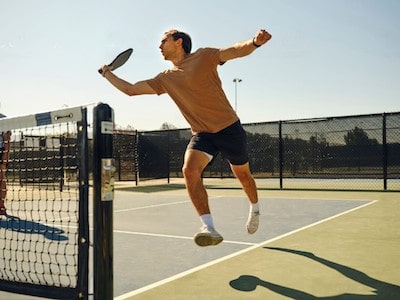
While standing in the kitchen, track the ball in the air while backing up and reestablishing yourself outside the kitchen. Now that you are fully outside of the non-volley zone, a spike is once again in play.
As long as the ball is high enough, you can probably just spike it standing in the kitchen for a regular stroke.
Is Spike Legal in Pickleball?
Most of the time, it is legal. Tennis, volleyball, ping pong, and other net sports allow you to spike from anywhere. The situation is different here.
As pickleball is structured, spiking right in front of the net wouldn’t be very fun. Since there isn’t a lot of space to cover, and the ball can’t be hit very hard or high, someone could just sit at the net and spike it straight down and win every point. Awful.
For this reason, pickleball uses a space called a kitchen in front of the net. Located just in front of the net, this is called the non-volley zone. You cannot hit the ball out of the air when any part of your body is in this box, or your toe is on the kitchen line. Spiking falls under this category.
Otherwise, spikes are legal anywhere on the court except in the kitchen line.
FAQs
After the ball is served, the receiving team must allow it to bounce before returning it, and the serving team must allow it to bounce before returning it therefore, two bounces are required. Both teams can either volley the ball (hit the ball before it bounces) or play it off a bounce (ground stroke) after the ball has bounced once in their courts. The two-bounce rule eliminates the serve and volley advantage, extending rallies.
Pickleball’s most aggressive offensive shot is the pickleball overhead smash. Smashed hits are forceful and directed downward at a sharp angle into the opponent’s court from as high in the air as the player can reach.
To spike the ball, a spiker must be on the same side of the net as the ball. However, a spiker can reach over (but not touch) the net during the follow-through. Underneath the net, a player may go as long as it does not interfere with the other team.
This is a legal form of intentional grounding since the quarterback is not attempting to avoid a sack and throws the ball to the ground as soon as he takes the snap. The pass is considered incomplete.
Wrap Up
An overhead shot keeps your opponent on their toes. A pickleball overhead shot is a defensive move that prevents your opponent from getting too close to your side of the court. It can also force them into an awkward position.
Practice your overhead hits in pickleball while keeping your body parts moving properly to avoid injuring yourself or others.
As a pickleball attack, a pickleball overhead smash is highly effective. The opponent should have an extremely low probability of returning it when executed correctly.

I am a professional physiotherapist and the author of the BallSportsPro. I worked with athletes of all levels, from amateur to professional, and i helped them overcome injuries and improve their performance. I am a certified Pickleball instructor and has been playing the sport for over 10 years.

